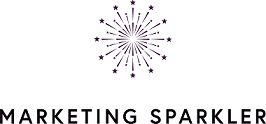Marketing your business with online content is the ultimate way to bring traffic to your website. You can use articles, newsletters, blog posts, social media updates, quizzes, FAQs and more to help bring traffic, but there are ways to do it so that you can grow your business the right way.
Having a lot of followers isn’t indicative of success: earning money is. So, if you want to grow your business you have to know which content to leverage. And it all starts with a plan.
[Tweet “Having a lot of followers is not indicative of success. Earning money is.”]
No time to read this entire post? No worries! Listen to it on the podcast.
Content Is Still King
Everything revolves around content. At this point, we are ALL content creators. Content is needed for every aspect of your business. If you create information products you need even more content. However, even if you sell other types of products or services, you still need a lot of content to educate, engage, and encourage your connections to buy from you.
How does the average ‘preneur figure out which content to use?
A. Forms of Content
First, identify all of the many forms of content that you can use:
- blog posts on your website
- guest posts and articles on other websites
- social media posts
- interactive tools like quizzes and calculators
- ebooks
- infographics
- slideshows
- podcasts
- video channels (hello IGTV)…
and more. I mean the list is freakin endless! Content can be text, audio or visual. Having a combination of different forms of content will help you reach more of your audience. This is not to say that you need to be using all of these forms of content, but you need to use more than one. Identify a mix that fits your audience AND your offers.
If you think about the content in practical terms, in the context of the types of content you consume on a daily basis, this process will become much clearer. Take off your business owner hat, and put on your “consumer” hat. Let’s use a scenario that is familiar to a lot of people: buying a home.
For example, if you want to purchase a home in or around Atlanta, GA, you might visit a website like Atlanta Homes for Sale and look at upcoming homes for sale (slide show updated in real time). You might also browse the site and look at home buying classes (in-person content), short sale tips (blog), or you might even use the affordability calculator (interactive tool). As a result of using the value-based resources on the site, you might decide to complete a contact form and talk with a Redfin agent. This is how content marketing works!
Now put your business owner hat back on. The consumption of value-based content you just followed, how would you like your website visitors to follow this process? Pretty sweet, right? This is the goal! You want your prospect to consume and interact with your content, and if you are a right fit, you want them to contact you for follow up.
Keep this scenario in mind as you continue reading this post, it will make the pieces of the content puzzle fit much easier!
Related Article: The Small Business Guide to Content Creation
B. Have a Plan of Action
The next step to ensuring that you are leveraging the right content is to have a plan of action. Don’t just create or have content created without a point of view, voice, and the goals for the content in mind. In other words, don’t be all willy-nilly about your content. You know, a random post about product A here, a random video about product B here, three weeks later a random motivational meme, etc. You know those people. Don’t be one of those people. Make. A. Plan.
Related Article: First Things First: Content Strategy Before Social Strategy
C. Create a Publication Calendar (aka Editorial Calendar)
When you know what content you want to create, it’s important to spell it out in a calendar so that you will do first things first. For instance, if you are launching a new product in three months, you can start teasing your list now with sneak peeks and progress updates. You could schedule a few webinars or Facebook Lives around the product topic to lead up the actual launch. If you’re going to have affiliates or JV partners, you need to schedule out your promotions in advance so that you can share them with above-said partners.
Related Article: Why You Should Start Using an Editorial Calendar
[Tweet “Launching a new product in 3 months? Start teasing your list now with sneak peeks and progress updates.”]
D. The Email List Is the Most Important
They say the money is in the list, and that’s as true today as it was five years ago. Social media marketing has NOT replaced email marketing; it has created another way to lead people to your email lists. Leverage your social media to build your list.
Related Article: Why Email Marketing is Important for Business
E. Develop Incentives to Collect More Email Addresses
The point of your blog posts, social media updates, and webinars is to collect information from your target audience so that you can market to them within your email lists. Host webinars, ask for sign-ups on social media, and incentivize lists with free giveaways or low-cost entry products and services.
Related Article: How to Build a List of Email Subscribers (and Keep Them)
All Content Should Work Together
Think reverse engineering: start with the end in mind to create the plan that will achieve your goals. Starting with the product, service or event that you want to promote, work your way back to today. Decide the different types of content that you will use to get more email subscribers to whom you can market and promote your goodies. Decide what type of content they need, to become interested, informed, and excited about your products and services so that they will buy.
Consider Drawing a Workflow
Looking at how all your content works together to bring in buyers as well as encourage the sale, may help you identify gaps in your content needs. This is a crucial step that is often overlooked. However, mapping out your workflow in writing (not in your head) will highlight any holes in your plan. Your workflow will also help you to identify the types of content needed, and the format.
Here are a couple of examples of what your content workflow might look like:
Free Email Subscription Optin: Checklist > 7-Day Email Ecourse > Webinar > Group Coaching Program > One-on-One Coaching , OR
Low Cost Ebook> Webinar > DIY Video Ecourse > Group Coaching > etc.
As you can see, writing this out should help you decide what you need: graphics, video and text posts to promote an optin vs. video and text for your ecourse vs workbook and video for your group coaching participants. Does it make sense?
By knowing what your goals are for the content that you create, you’ll be able to leverage your resources more efficiently, to grow your business far beyond what you thought possible.
Ciao,
Miss Kemya



